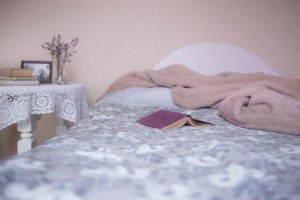Some time ago, I noticed in my news feed on Face Book that someone had tagged my name and decided to take a look. The link took me to a post on a professional network group for occupational therapists. Someone congratulated me on my article on the Huffington Post website about the role of occupational therapy in sleep and wellness.

The benefit of reading the original post on a thread of discussion
I thanked the person and was going to leave the thread. Suddenly I decided to look little further. I was interested to know who began the thread and how my article might have been mentioned. To my surprise, the OT who posted had shared my article and so began a discussion about how many OTs are evaluating our patient’s sleep patterns. From the discussion that transpired, one of the OTs mentioned a common problem that many of her patients experience.
One of the comments was…
The OT said that she works with patients who suffer from Post Traumatic Stress Disorder. She mentioned that many of them avoid sleeping due to their nightmares. Evidently the nightmares arise because of past traumatic experiences. I mentioned that we as OTs can indeed work with clients who have sleep disturbance. In addition, we have the skills to work with the nightmares too.
Some techniques or areas of intervention related to sleep
- Training in relaxation techniques
- Training in Stress Management Skills
- Working with the person to develop a balanced lifestyle including adequate and regular exercise
- Working with the trauma through various creative activities and techniques in order to help the person to transform the residual emotion.
- Using creative activities to help the person to regain their power by altering the outcome of the traumatic incident. It is possible to work with the emotions associated with past traumas. One way to do so is by working with the client’s imagination. Through the imagination one can come up with creative ways to alter the event. e.g. if someone was locked in a room and the trauma is related to how they would get out. In such a situation one can use the imagination to come up with ideas of how to get out. In this way, the person can free their energy by discovering that there are options. Journaling or keeping a dream journal can be very useful for part of this process.
- OTs have techniques to assist a person suffering from PTSD. One area to work on might be to forgive themselves and those involved in the trauma. An example can be a widow forgiving her late husband for leaving this world and thus rendering her a widow.
Conclusion of how OTs help with sleep and sleep disturbance
These are just a few ways in which an OT can someone who is experiencing nightmares that impact on their sleep. As with all OT intervention, a careful evaluation and history will be necessary. The evaluation will determine to what extent OT intervention is indicated. It will also help the OT to identify types of intervention suitable for the client.
Does this help you to gain insight into the role of the occupational therapist for those having difficulty sleeping? Do you still have questions? Post a comment in the comments below or be in touch via my contact page. I’d love to hear your questions or comments.
